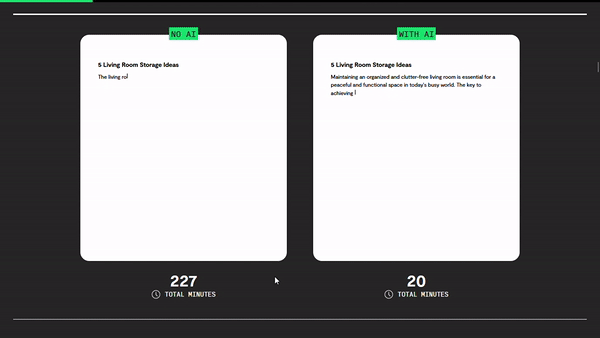AI Perspectives - Datasketch Newsletter #32
Artificial Intelligence | Work | Journalism
Available in:
We are using more and more Artificial Intelligence tools. They are helping us improve our work, but they are also speeding up the pace of work for less pay and causing knowledge to stagnate without better answers. Is this the good, the bad and the ugly of this technology? Not exactly so, but we will be able to better understand the complexity of AI by looking at it from different angles. Let’s read up!
The Cost of Artificial Intelligence
This technology makes our lives easier by solving questions and assisting in routine tasks, but at what cost?
Those who review the content to give accurate and unbiased answers have to work more, in less time and less money, that is, 14 dollars per hour. That’s what Bloomberg exposes about people working in AI services. The pace and complexity of the work have increased with Google’s Bard entering the race. For example, they are required to evaluate medication dosage responses in a matter of minutes. They do this controlled by another AI tool and without knowing the responses' source or the feedback’s destination. At this rate, there are responses, but the quality remains in question.
For others, AI has become the competition and also brought with it decreased pay and deadlines in freelance writing, design and software development work. They are even being used in call centers for customer support, which could replace workers in countries like the Philippines.
Rest of World’s report refers to the situation in various professions and countries in the Global South. The best part is that it shows the difference in tasks by outcome, duration and total cost with and without AI. We are experiencing a change in the dynamics of work, which can increase efficiency as well as provide insufficient conditions for people.

Hands on work using AI
People around the world are working to improve journalism with this technology. JournalismAI, the global initiative that trains media outlets in the responsible use of artificial intelligence, selected 32 fellows to work in pairs with editorial and technical colleagues to deliver AI-powered reporting solutions. We are eager to see the results just by looking at the gallery of projects. They include articles tailored to their readers, real-time bias detection, chatbots trained on media content, and several more.
To get them out there, they are soliciting experts who can support them on the topics listed in the project gallery tags, especially LLM (Large Language Modeling), Machine Learning, and NLP (Natural Language Processing).
🛠️ Write to hello@journalismai.info and contribute
The Repetition Machine
As we mentioned before, AI comes with biases. Either because it is based on internet content, mainly in English and coming from countries in the Global North, or because the content is loaded with all kinds of discrimination or is simply misleading.
Nicolas Kayser-Bril went further with his analysis. In the Algorithm Watch newsletter, he showed that language models predict the following words in the response from statistical inferences without recourse to even the best arguments. Instead, it prioritizes the response of whatever has the most content on the Internet and whoever can grab it. In other words, instead of honing our knowledge by contrast, AI can make it repetitive and based on what other people think.
On the radar
- 🦾 Report “Democracy-Affirming Technologies: Aligning Technology with Public Interest and Social Good” | Tech4Democracy
- 👩🏾🎤 Women are superstars on stage, but still rarely get to write songs | The Pudding
- 🤖 Informal and informed chats between Santiago and Laura about the digital world (es) | Cosas de internet podcast
- 👩🏾🔬 What Barbie’s many careers say about feminism and American girlhood | The Washington Post
- 🏛️ Preliminary agenda of the 8th OGP Global Summit | Tallinn, Estonia, September 6-7
You’ve read one more issue of the newsletter, or did some AI do it for you? 🤔 For your peace of mind, you’re still reading human beings. 💁🏾♂️ Send it to people you know and even those you want to know more about. It’s sure to be an icebreaker 😉.




